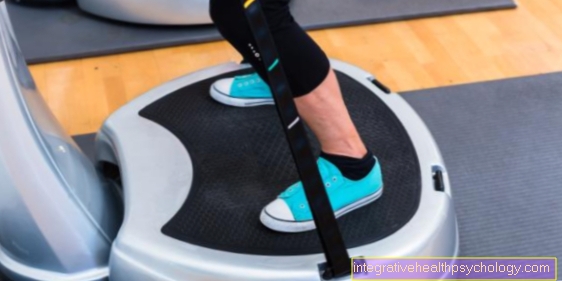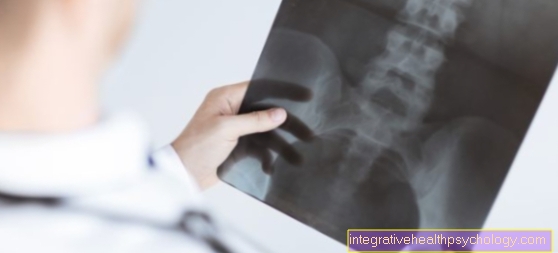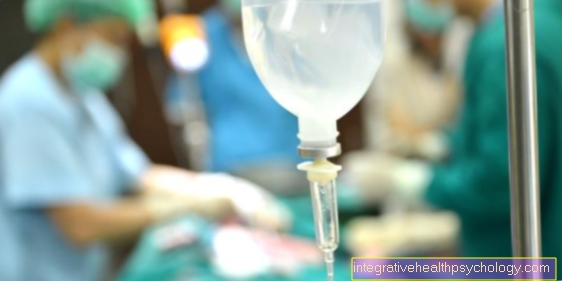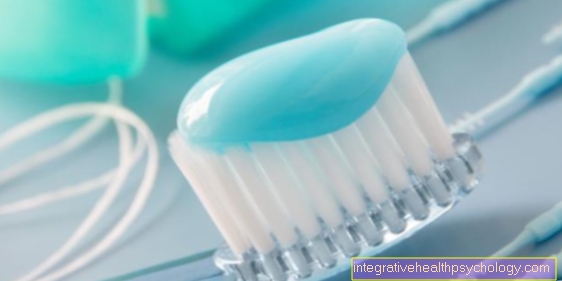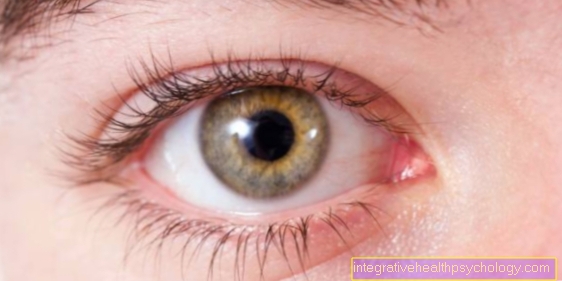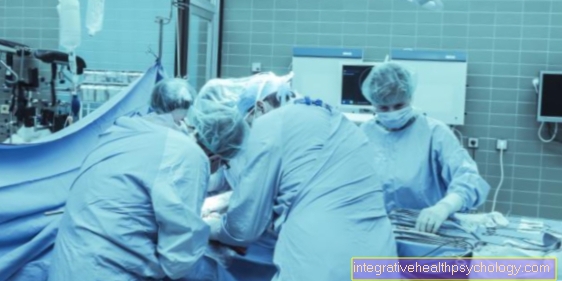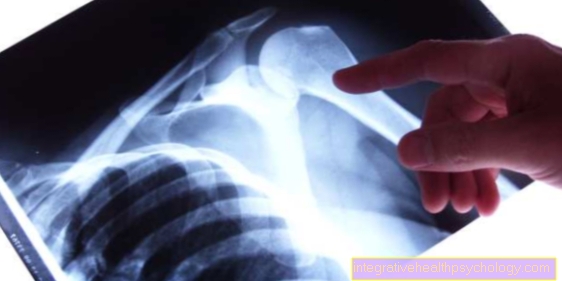U6 investigation
What is the U6?
The U6 examination is the sixth preventive examination in childhood. It is often referred to as a one-year examination, as it is usually carried out by the pediatrician at the age of 10-12 months.
In addition to the general basic health check, the main focus is on checking and assessing mobility, coordination, as well as play and social behavior. In addition, the eyesight is checked in order to recognize possible visual damage within the first year of life and to be able to treat it at an early stage.
You might also be interested in: U examinations

When will the U6 take place?
The U6 examination is one of the recommended child preventive examinations and is carried out after the first 5 preventive examinations at an average age of 10 - 12 months.
The examination may be carried out by the treating pediatrician at the earliest from the 9th month of life and no later than the 14th month of life. If it is missed and does not take place within the specified time frame, the costs must be borne by the parents themselves. In addition, the time frame should be adhered to, as the small children develop particularly quickly and quickly in this phase of life and a comparable assessment may no longer be possible.
You might also be interested in: Baby growth spurt
Which examinations are carried out?
After the initial conversation with the parents, the height, head circumference and body weight are measured. The measured values are plotted on a so-called percentile curve in order to be able to compare the physical development with that of children of the same age.
During the subsequent physical examination, the vital functions are checked first. In addition to examining the individual organs such as the heart, lungs, liver, spleen, intestines, mouth, eyes and ears, the external genitalia are also examined. In boys, the doctor palpates the testicles and checks whether they are in the scrotum or whether they have not descended completely and are still in the inguinal canal or abdomen.
This is followed by specific tests and surveys that must be collected from the U6. In a playful way, the doctor tries to test whether the child is crawling, whether they are pulling themselves up on objects, what their sitting position looks like and whether they can sit upright with their legs straight.
Children's reflexes are also checked. For example the support reflex, in which the baby instinctively supports itself with its arms when falling forward.
To check fine motor skills, the doctor tests whether the child is gripping objects with their whole hand or is able to use the forceps grip and grasp the object with their thumb and forefinger.
In order to check the language and social behavior, attention is paid to how the child communicates. One observes or asks the parents whether the child uses loud or two-syllable words, whether he understands simple instructions, whether he is attentive or is unfamiliar with the doctor or medical staff.
If there are any special features during the examination, further examinations such as laboratory or ultrasound can be suggested for further clarification.
How does the U6 work?
The U6 examination has a clear structure so that a comprehensive assessment of the child's overall developmental status can be made during the first year of life.
By talking to the parents, the pediatrician first tries to get a rough overview of the baby's development to date. The doctor asks about the medical history, possible behavioral problems, sleeping and eating habits and any existing allergies.
This is followed by an extensive physical examination of the child and a routine measurement that includes body weight and height.
This is followed by the examination focuses and tests that are specific for the U6, in order to be able to assess the level of mental, physical and motor development in comparison to peers.
At the end of the preventive medical check-up, the test results are discussed with the parents and any questions that may arise are clarified. In addition, the doctor will advise on how to proceed with regard to the next preventive examinations and vaccinations.
Live vaccinations, which include rubella, measles, mumps and chickenpox, are recommended from the age of 11 months. These are given as multiple vaccinations between the 11th and 14th month of life. In addition, the large six-fold vaccination consisting of tetanus, pertussis, diphtheria, polio, Haemophilus influenzea, hepatitis B and a pneumococcal booster is due.
In addition, the doctor once again clarifies the importance of correct dental care for the baby and points out that sweet baby food from the bottle is very harmful to children's teeth.
Read more about this under: Vaccinations in the baby
Does my child have to go to U6?
The preventive medical checkups for infants and children are recommendations of the paediatricians, the youth welfare office and the health system. Regularly taking part in this preventive program serves the mental and motor development of the child, as well as the early recognition of developmental deficits.
The implementation of the U6 is not required by law.
In some federal states, however, parents are asked to carry out this examination. If the parents do not comply with the request, one must expect the health department to write to the parents again or to send a report to other authorities, such as the youth welfare office. These measures are intended to ensure the child's well-being.
You might also be interested in: Should I have my baby vaccinated?
Who bears the costs of the U6?
The early diagnosis examinations of infants and children have been one of the compulsory health insurance benefits since 1971. Since 2006, four further preventive examinations in the form of the U7a, U10, U11 and J2 have been included in the program. They enable a comprehensive assessment in the various stages of development.
The costs of the U6 preventive medical check-up are covered by statutory or private health insurance companies. However, if the time frame in which the U6 examination may be carried out is exceeded, the parents have to pay for the costs themselves.
After a while, other examinations will continue, read more about this under: U7 investigation - you should know that!
How long does the U6 examination take?
The duration of a U6 examination can vary greatly for each child. As a rule, around 15 - 25 minutes are allowed in a pediatrician's practice to carry out the examinations prescribed as part of the U6.
In addition to the detailed examination and observation of the child's development and behavior, questions and fears of the parents should of course also be addressed and clarified as part of the U6 examination. In addition, the pediatrician should advise on upcoming examinations and vaccinations.
If the parents' questions or any conspicuous examination findings need to be discussed in more detail, such an appointment can sometimes take a little longer. If everything is okay with the child and there are no further questions or concerns on the part of the parents, one should not worry if a preventive medical examination may only last 10 minutes.
You might also be interested in: When does my child start to walk?

.jpg)
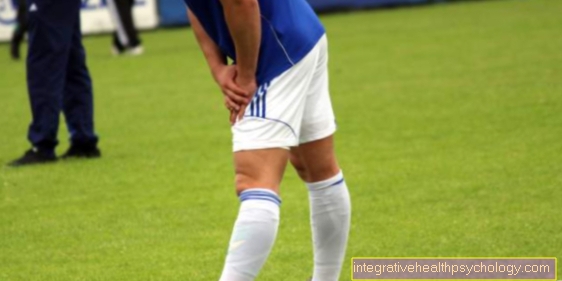


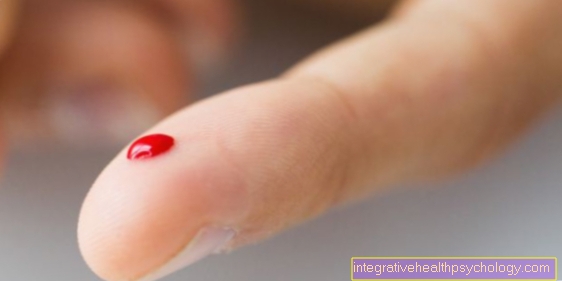








.jpg)


